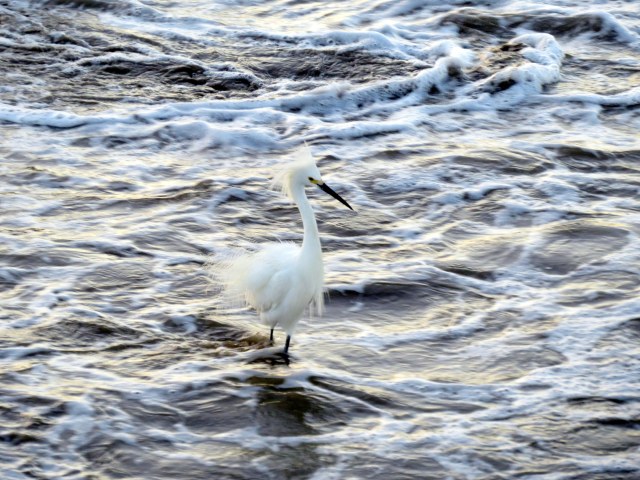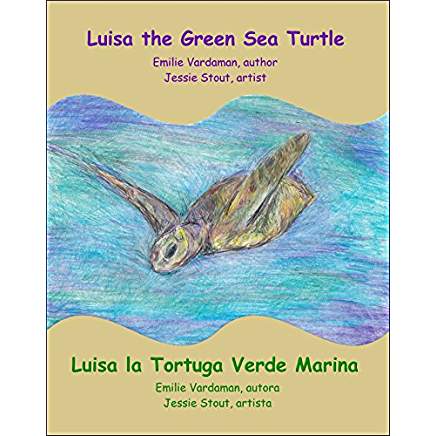I met Cosme in Bahía Kino five-and-a-half years ago. He worked for Prescott College’s Kino Bay campus. His job was to drive students to study sites, take them out in the college’s boats, (pangas), and also maintain the vehicles and boats.
He’d been a fisherman for years, as many young, healthy, strong men there are. But he got hired away from fishing by the college.
Cosme did turtle tagging on the side, and the college supported his efforts by allowing him to use one of their pangas. I asked to go out with him one day, and that began an activity I continue still.

A panga at sunset
Bisbee friend Cinda was joining me. We swung by my ”brother” Roberto’s restaurant and ordered two dozen burritos for the following morning. The next day we rose early, well before dawn, on a cool March morning. We dressed in layers knowing the day would heat up. Our packs held hats, sunscreen, and plenty of water. We headed to Roberto’s for the burritos just after 6:30 and then went out to the estuary (estero) to meet up with Cosme and his brother, Pepe, before seven, at dawn.
We left my car parked on the beach.

My trusty RAV, Lucille
We climbed into the panga, and Cosme headed out to the middle of the estuary’s waters. There we dropped a fishing net attached to buoys. The net line was four feet tall – just about the depth of the water – and around eighty feet long. After that, Cosme took us on a brief tour of the estero.

Heading out
We saw egrets, blue-footed boobies, herons, and osprey, and I got a good look at my first green heron We also saw mangroves, and tiny islands that existed only at medium to low tide. We got out on one of the islands to roam a bit.

Egret

Osprey
I asked about the turtles. If they were caught in our net, wouldn’t they drown? Cosme explained that a turtle can stay under water for about four hours, but he planned to be back at the net in about two hours.
When we got back to the net, we had a turtle! The men hauled her in and got her into the panga. Cosme had me cover her eyes with a damp towel. Like many animals, if they can’t see, they don’t panic so much. The thrashing turtle, all 180+ pounds of her, settled down once her face was covered.
 Pepe getting a turtle into the boat
Pepe getting a turtle into the boat
Cosme then showed us how to remove the barnacles attached to her shell and head. He said he’d seen two terrible situations with barnacles on turtles. One was when was a turtle had a barnacle growing over her mouth. She could eat only with half a mouth, and he felt she was quite malnourished and underweight. The second instance was a barnacle covering most of a turtle’s eye. He was able to safely remove both.

A turtle with barnacles, thankfully not covering an eye
We recorded placement of each barnacle on a chart. Every turtle had her own chart, and yes, all the ones we’ve netted have been females. Males head into the ocean when they hatch and never return to land. Females return only to lay eggs. Likely the ones we caught over the years were in the neighborhood to lay eggs, though some could have been there for the sea grasses they enjoy eating.
We later brought this turtle and two others to shore. We measured each one – her length and width, and length of tail, and recorded the information. Cosme weighed each big girl and had me write it down. Then we tagged each one, noting her tag number on her chart. and released them back to the sea.

Me measuring a turtle, her face still covered

Cosme weighing, Pepe reading the scale
One day, I asked Cosme if he’d become concerned with turtles since working for Prescott College. As it turned out, it was the other way around. It was his interest that got him hired. And he proceeded to tell me the story of how he became interested in turtles and then, as a fisherman, one who’d once enjoyed turtle soup quite regularly, began working to save them.
I remember thinking at the time, Wow. That’s a good children’s book!
The idea rolled around in my head for a little while, and then I sat down to write the story. Several revisions later, some inspired by friends who read it and one inspired by my then five-year-old grand niece, I had a final draft.
I sent it to my friend Teri, a professional translator in Hermosillo.
But I sat on it for many months. Then I sent it to my niece Jessie, who draws quite well. She sent me back a sample drawing and I fell in love with it.
It took Jessie quite a while since she worked full time and helped do some child care on weekends, but she finally had drawings for the whole book. The drawings and their locations had all been determined by my grand niece, Aenea.

Jessie’s drawing of Luisa eating
So I had it all. But I sat on it again, for about ten months. The only thing remaining to be done was create a map that showed Luisa’s route from Baja California to Sonora, yet I sat. Insecurity, I imagine.
Finally, one day I put an entry in my calendar for the following day: Do the damn book.
And I did. I made the map, printed photocopies, colored it in, drew the route, then photographed it. I organized all the photos and emailed the whole to Debora, the woman who lays out books for friends of mine and, now, for me.

The dashed line shows a typical route for turtles headed to Kino
And here we are, two months later. Luisa the Green Sea Turtle, a bilingual read-to book, is on Amazon, sitting there waiting to be purchased. It is, basically, Cosme’s story come to storybook. I am forever indebted to Cosme, Pepe, their cousin Matilde, and all the tortugueros of Tortugueros de las Californias, an organization that does tagging, like us, and more. Some locations rescue and rehab injured turtles. Most, including folks at Kino, protect turtle nests.

Five years ago, many Kino residents couldn’t remember the last time they’d seen a turtle nest on the beach. Last summer, the town rejoiced in the seven nests that were faithfully monitored. Townsfolk turned out to watch the “eruption”, the time baby turtles emerge from the sand.
And I am a small part of all of this!!
Interested in reading Luisa the Green Sea Turtle? Here’s the link (it may not be live – I don’t know how to add them into WordPress, so copy and paste!):